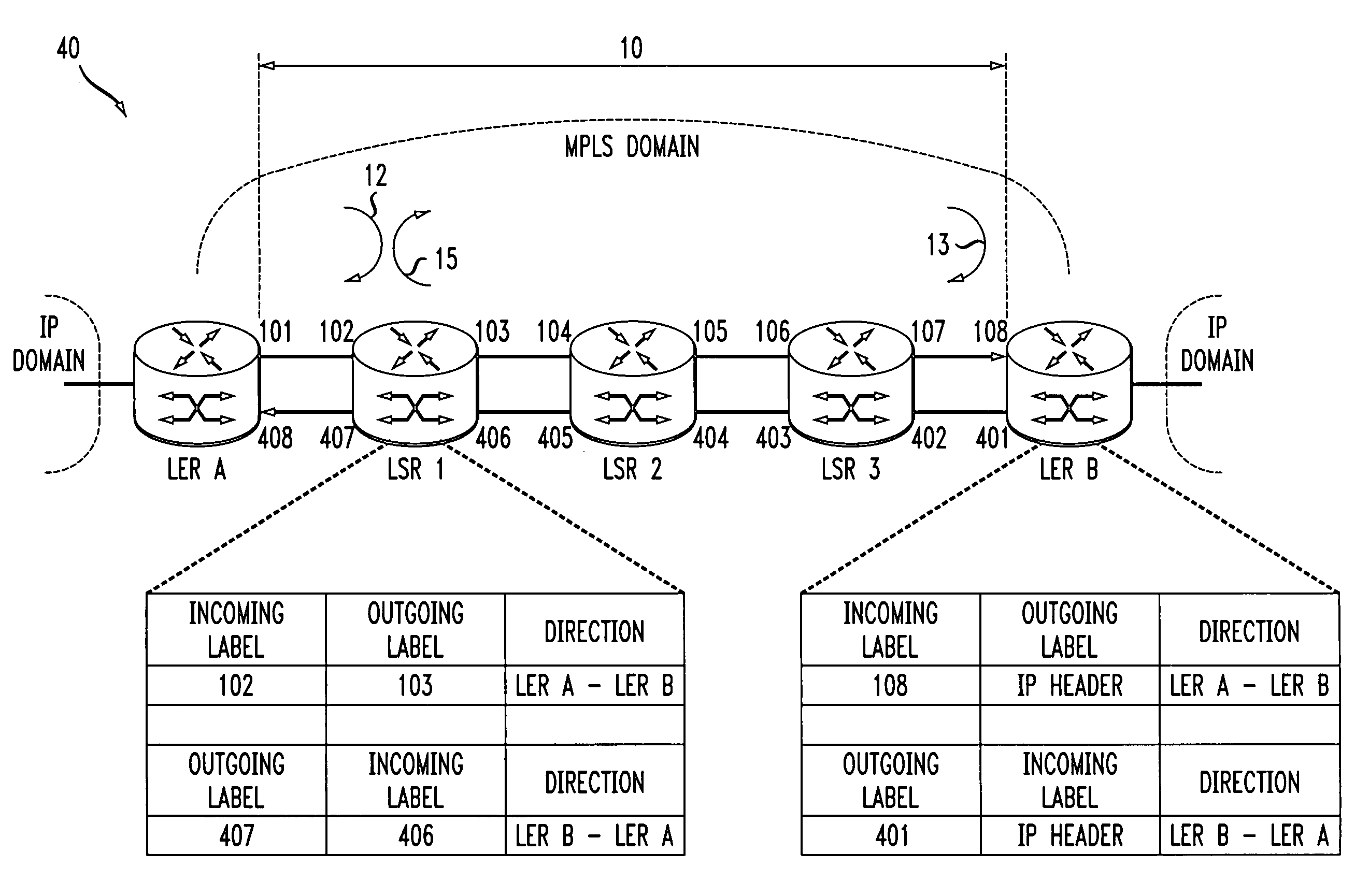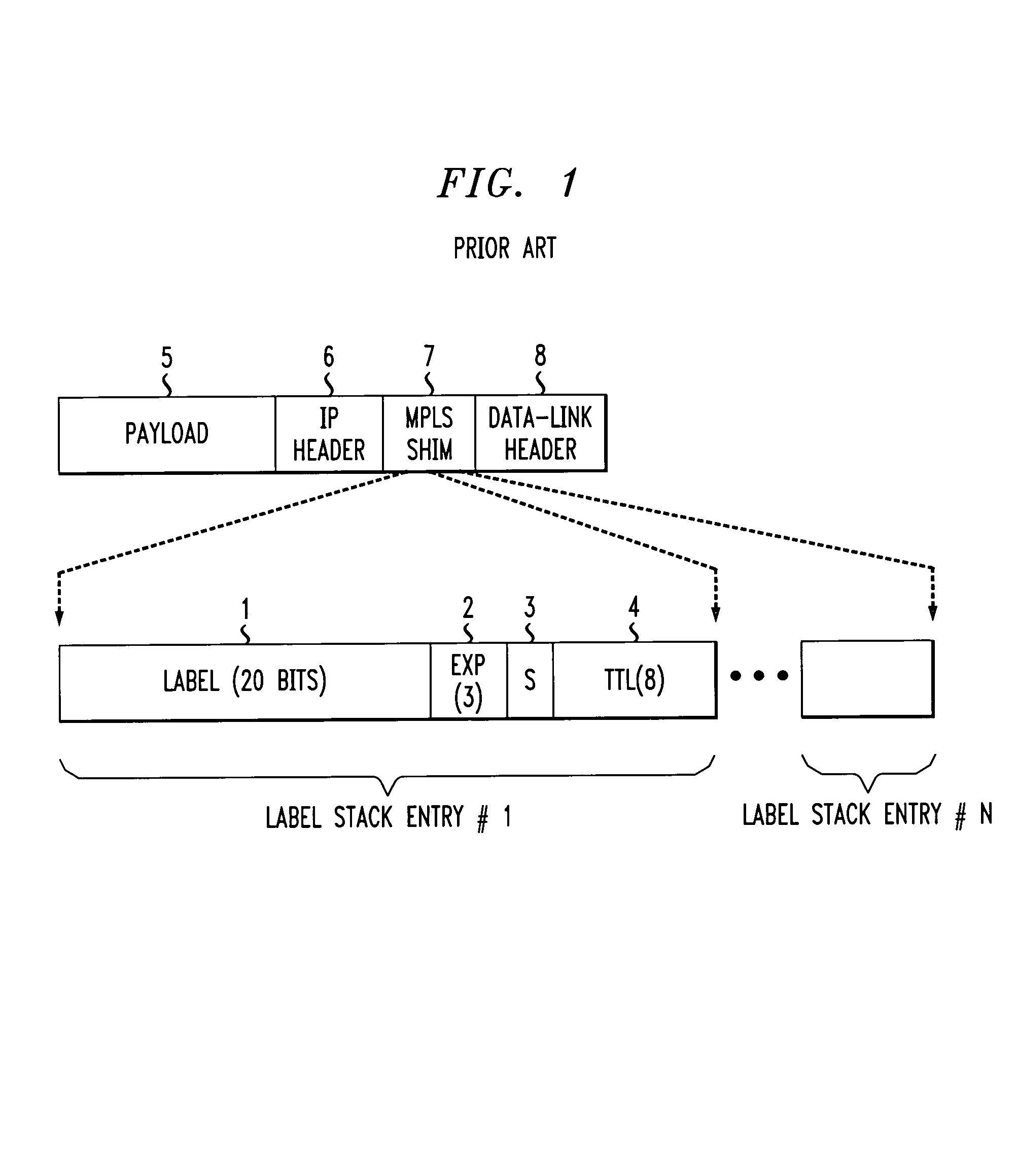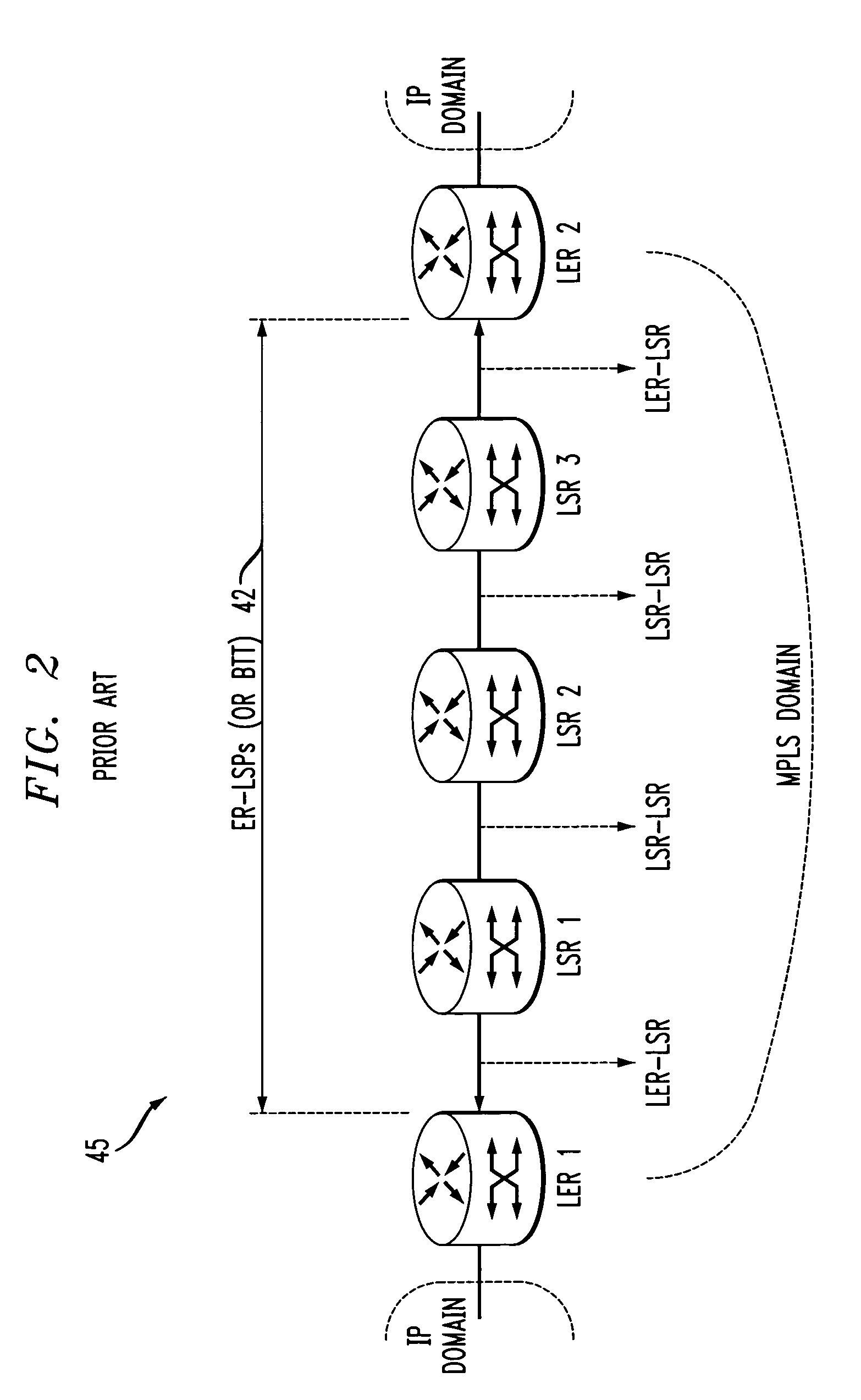Loopback capability for bi-directional multi-protocol label switching traffic engineered trucks
a multi-protocol label and truck technology, applied in the field of network operation, administration and maintenance (oa & m) functions of communication networks, can solve the problems of insufficient continuity and qos attributes of te trunks, oa&m functions that mpls lacks currently, and can only be implemented, so as to reduce unit costs, improve reliability, and improve the effect of oa&m
- Summary
- Abstract
- Description
- Claims
- Application Information
AI Technical Summary
Benefits of technology
Problems solved by technology
Method used
Image
Examples
Embodiment Construction
1. Label Switching Router Performing Loopback
[0035]FIG. 3 illustrates MPLS network 40 and NHLFEs for LSR 1 and LER B. An originating LSR, such as ingress LER A, can activate a loopback function in an intermediate LSR or a LER. As shown using loopback arrows 12 and 13, FIG. 3 illustrates that either an intermediate LSR, such as LSR 1, or a LER, such as LER B, may be a loopback LSR. Using either LSR 1 or LER B as a loopback LSR, a loopback packet, transmitted on BTT 10 from LER A, is transmitted back to LER A on BTT 10 from the loopback LSR.
[0036]FIG. 4 is a schematic block diagram of a preferred embodiment of an LSR performing a loopback procedure in MPLS network 40. The LSR shown in FIG. 4 includes ports 50–53, processing circuitry 65 and switching fabric 60. Each of ports 50–53 includes transmitting circuitry, receiving circuitry and packet assembly circuitry, as is known in the art. Ports 50–53 are connected to processing circuitry 65 through switching fabric 60. The switching fab...
PUM
 Login to View More
Login to View More Abstract
Description
Claims
Application Information
 Login to View More
Login to View More - R&D
- Intellectual Property
- Life Sciences
- Materials
- Tech Scout
- Unparalleled Data Quality
- Higher Quality Content
- 60% Fewer Hallucinations
Browse by: Latest US Patents, China's latest patents, Technical Efficacy Thesaurus, Application Domain, Technology Topic, Popular Technical Reports.
© 2025 PatSnap. All rights reserved.Legal|Privacy policy|Modern Slavery Act Transparency Statement|Sitemap|About US| Contact US: help@patsnap.com



